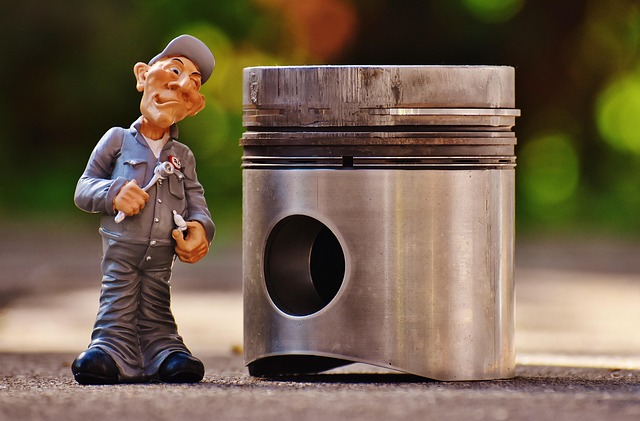Looking to register your car in California? This comprehensive guide walks you through every step of the process, ensuring a smooth transition. From understanding the California vehicle registration process to conducting crucial VIN verification, we cover it all. Learn how to gather necessary documents, submit your application with ease, and receive your official California registration certificate. Master the art of vin verification and get your vehicle registered in no time!
- Understanding the California Vehicle Registration Process
- Gathering Necessary Documents for VIN Verification
- Conducting a Vehicle Identification Number (VIN) Check
- Submitting Your Application and Required Fees
- Receiving Your California Registration Certificate
Understanding the California Vehicle Registration Process

In California, registering a car involves multiple steps to ensure compliance with state laws. The process begins with gathering essential documents and information about your vehicle, including its make, model, year, and unique Vehicle Identification Number (VIN). A crucial initial step is conducting a VIN verification, which can be efficiently managed through a mobile vin verifier or mobile vin inspection service. These services streamline the process by cross-referencing your VIN with state records to validate the vehicle’s history, ensuring it meets all legal requirements before registration.
After confirming the vehicle’s details, you’ll need to visit a California Department of Motor Vehicles (DMV) office to complete the registration. Here, you’ll provide proof of insurance, pay the required fees, and pass any necessary inspections. The DMV will then issue a registration certificate, officially recognizing your car as registered in the state of California. Opting for a mobile vin verifier or conducting a mobile vin inspection beforehand can significantly simplify this process by ensuring all paperwork is in order and avoiding potential delays at the DMV.
Gathering Necessary Documents for VIN Verification

Before registering your car in California, it’s crucial to gather all the essential documents for VIN (Vehicle Identification Number) verification. This process is a critical step in ensuring the accuracy and legitimacy of your vehicle’s information. You’ll need several key pieces of documentation, which can be obtained from various sources. One convenient option is to utilize a mobile vin verifier or conduct a mobile vin inspection, allowing you to gather these documents from the comfort of your home.
These documents include proof of ownership, typically a title certificate, and valid registration papers. Additionally, you’ll require a current vehicle insurance policy, which demonstrates that your car is insured for road use. Some states may also ask for a safety inspection report or emissions test results as part of the VIN verification process. Ensure that all these documents are readily available to streamline the registration procedure.
Conducting a Vehicle Identification Number (VIN) Check

Before registering your car in California, conducting a Vehicle Identification Number (VIN) check is a crucial step. This process involves verifying the VIN data to ensure the vehicle’s history is clear and accurate. You can perform a VIN inspection yourself or use a mobile vin verifier service for added convenience.
A mobile vin inspection allows you to have the verification done quickly at your location, making it especially handy if you’ve just purchased a used car. This method streamlines the registration process by providing instant access to detailed vehicle history reports, including information on previous owners, maintenance records, and any reported accidents or damages. With these insights, you can make informed decisions during the registration process.
Submitting Your Application and Required Fees

After completing your vehicle’s registration application, it’s time to submit everything to the California Department of Motor Vehicles (DMV). This involves providing original documents and paying the necessary fees. One crucial step in this process is vin verification, ensuring that the Vehicle Identification Number (VIN) on your car matches the information in the DMV system. You can facilitate this with a mobile vin verifier or conduct a mobile vin inspection to streamline the verification process.
When submitting your application, be prepared with documents such as proof of identity, proof of residency, and valid insurance. The required fees include a registration fee and a vehicle clearance fee. It’s essential to double-check that all information is accurate and complete to avoid delays in processing your car’s registration in California.
Receiving Your California Registration Certificate

After successfully completing the registration process, it’s time to receive your California Registration Certificate. This document is a crucial part of car ownership in the state and serves as proof that your vehicle meets all the legal requirements. Typically, you’ll receive it within a few weeks after submitting your application, but this can vary depending on the DMV’s workload. Once obtained, ensure you keep a copy of this certificate in your vehicle at all times, as it’s required for displaying proper registration during inspections and for insurance purposes.
The process of obtaining this certificate involves a thorough vin verification to confirm the vehicle’s identity and history. This is where services like mobile vin inspection or a vin inspector can be beneficial. They ensure that your car’s information aligns with the records, providing peace of mind and streamlining the registration experience, especially if you’re new to California or transferring ownership.
Registering a car in California involves several straightforward steps, from gathering essential documents for VIN verification to submitting your application and fees. Once completed, you’ll receive your California registration certificate, ensuring your vehicle is legally recognized and ready to hit the bustling California roads. Always remember to conduct a thorough VIN check as part of the process to ensure everything is in order.



